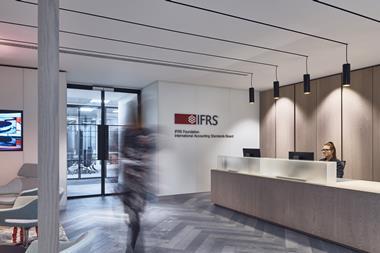UK - Marks & Spencer, the high street chain, is likely to face higher than anticipated pensions liabilities at its next triennial review, according to an analyst at Credit Suisse, as the calculations the firm used to establish its discount rate is substantially higher than its peers in the market.
An analyst's note on M&S suggests the firm's £5bn (€5.35bn) pension fund could be a "potentially continuing drain on the company's assets" despite proposed changes to member benefits and terms.
Furthermore, it predicts the company will have to contribute substantially more than is already allocated by the company in order to cover what Credit Suisse will be a shift from a £768m surplus in 2007/2008 to a deficit because of its 6.8% discount rate is higher than the analyst believes is appropriate and will therefore increase liabilities once the rate is revised at its next review.
"M&S is attempting to limit its exposure to increasing liabilities for the 20,000 members still employed by the company by capping salary inflation assumptions, but the use of a more realistic discount rate and changes to life assumptions are likely to produce greater negative effects and result in a deficit which will need to be funded," said Credit Suisse.
"We think the problems at M&S will come to a head in 2009 and, as such, investors will need to be able to value the alternatives," it continued.
Credit Suisse goes further to suggest it believes "M&S financials have benefited from the accounting assumptions used to some extent" and argues the defined benefit pension fund is being reported in "an overly positive way under IAS19 because of the discount rate being used on the liabilities" so additional funding will be needed beyond that already established three years ago.
M&S's discount rate is said to be 30bp higher than other UK quoted "non-food retailers" and for every 10bps the discount rate moves, the fund's liabilities increase by £100m and the company would be required to pledge a further £200m to the pension fund via its property sale-and-leaseback joint venture - a scheme established two years ago to inject large sums into the pension fund and help clear any deficit long-term.
Within the last six months, the discount rate used to value liabilities has increased by 150bp, according to Credit Suisse - the equivalent of an £1.5bn in liabilities.
At the same time, Credit Suisse has said it would "like to be reassured" that the scheme's 41% holding in corporate bonds - worth £2.1bn in March 2008 - is "sound" as it argues the atypical market conditions currently favour its corporate bonds, but are therefore likely to leave the scheme exposed once corporate bond yields normalise to lower levels.
The M&S pension scheme liabilities are now the equivalent of 114% of the UK listed company's market capitalisation.
Credit Suisse has also argued it is unable to ascertain how M&S calculated that pensionable salaries dropped by 47% between 2005/06 and 2007/08 as the regular cost of active members increased from 15.8% to 27% and benefits paid also increased 34% to £200m, while average active scheme members have reduced by 23% and in turn reduced the pensionable salary per member.
"This is our view pre-dates, and cannot be explained by, changes in the terms available to active members," said Credit Suisse.
If you have any comments you would like to add to this or any other story, contact Julie Henderson on + 44 (0)20 7261 4602 or email julie.henderson@ipe.com












No comments yet